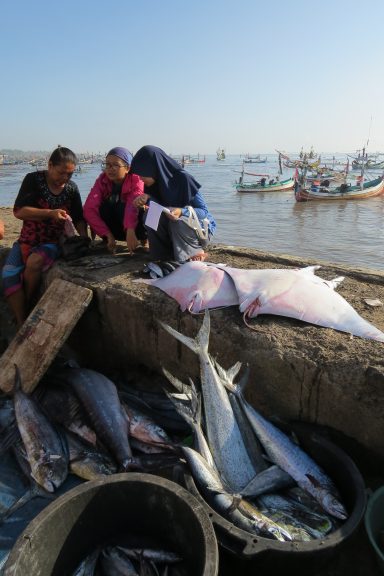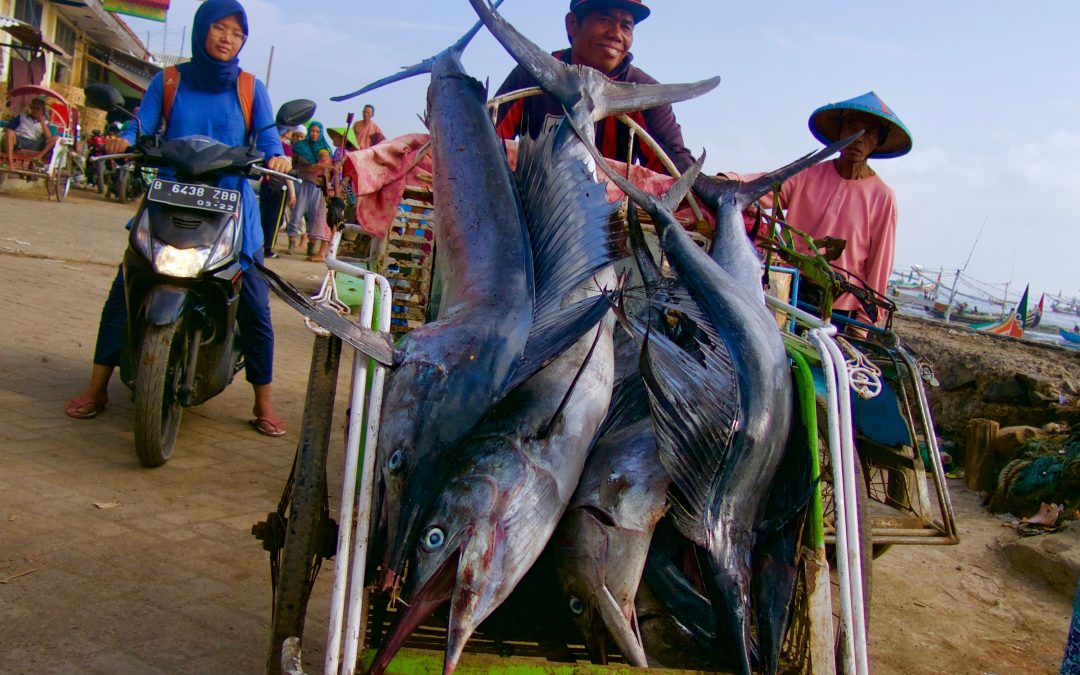Banyuwangi is known as the “Sunrise of Java”, because the sun rises so much earlier than I am used to in West Java. By 05:30 the people of Muncar have already begun their daily activities, and the port, the market and streets are already crowded.
We have also adopted a morning routine, and every morning we visit the port and other sites where fishers land their catches and transport them to their buyers. Port monitoring begins by 06:00.We have identified two main locations where the fishers land their fish.
Kalimoro is a fishing village next to the beach. When they return from the sea, fishers in Kalimoro bring their fish to the beach near to their house. The boats usually return between 06:00 and 08:00. Every day, we wait at a spot on the beach with Ibu Badriah, a buyer who helps us to recognise which fishers are returning. From this location, we can monitor all of the returning boats, and we know if the fishers have been successful if a porter approaches the returning boat and helps to carry the catch back to shore. After the catch is landed, we record the weight of each species, record the fisher’s departure and return time, and ask them which fishing grounds they visited.

Porters carry today’s catch to the shore
Muncar Fishing Port is the other location where we wait for returning fishers at the jetty. We walk back and forward, checking whether each fisher is a participant in our pilot trial. It is always interesting to see what fish have been caught. A pedicab driver helps fishers to transport their catch to the buyers, and when we find one of our participating fishers we record our data while they load up the pedicab.

A pedicab transports marlin to local buyers
We will use the data from our port monitoring programme to check and verify the logbook data that fishermen record themselves, and our aim is to sample 20 percent of all fishing trips. We conduct this monitoring every day, except if we have other activities such as school outreach visits or meetings with government partners.
One of the challenges of this activity is correctly identifying the target species. There are several species of marlin and tuna that look very similar, but this is a chance for us to practice our fish taxonomy skills.
We have also built a good relationship with all the people where fish are landed, as we meet a lot of people and have conversations every day. People at the landing sites like to share new information about the supply chain, the history of the fishing industry in Muncar, and their personal life as a fishing community. We also get to view the beautiful sunrise over the Bali Strait every day!

Vidlia Rosady and Retno Ningrum document a catch of mobula rays


